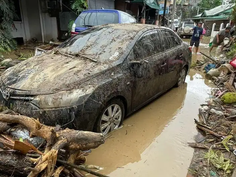Asia-Pacific Faces Mounting Climate Risks as Insurance Gap Widens
- Rahaman Hadisur

- Sep 11
- 2 min read
Hadisur Rahman, JadeTimes Staff
H. Rahman is a Jadetimes news reporter covering Asia

The Asia-Pacific region is on the frontline of climate change, enduring increasingly severe typhoons, floods, wildfires, and rising sea levels. Yet despite these escalating threats, the region remains dangerously underinsured. According to Swiss Re, one of the world’s leading reinsurers, only 16% of climate-related risks in Asia-Pacific are currently insured a staggering gap that highlights both vulnerability and opportunity.
From low-lying nations like Bangladesh and the Maldives to typhoon-prone countries such as the Philippines and Japan, the region is uniquely exposed to climate volatility. Losses from natural disasters routinely run into the billions, but most of those costs fall directly on households, small businesses, and governments rather than being offset by insurance coverage.
At the Business Climate Forum, co-organized by the International Finance Corporation (IFC) and the Hong Kong Monetary Authority, Swiss Re’s regional head Victor Kuk stressed that the protection gap is unsustainable. “The protection gap is one of the biggest challenges for Asia. Closing it is not just a business opportunity it is about safeguarding resilience for communities and economies,” Kuk said.
While the lack of insurance leaves people vulnerable, it also points to a market with enormous untapped potential. Analysts estimate that if even a fraction of the uninsured climate risks were covered, the Asia-Pacific insurance sector could see hundreds of billions of dollars in growth.
Insurers are now exploring new approaches tailored to the region. Micro-insurance programs aim to provide low-cost coverage to rural and low-income households. Parametric insurance models, which pay out automatically when predefined climate events occur such as floodwaters reaching a certain level are also gaining traction. Such tools could make insurance more accessible to populations historically excluded from financial services.
Experts argue that bridging the gap requires government involvement and cross-sector collaboration. Public subsidies could make premiums affordable for the most vulnerable, while investment in resilient infrastructure would reduce overall exposure. At the same time, governments can establish clearer regulatory frameworks to encourage insurers to expand into underserved areas.
International investors are also showing increased interest in climate resilience as part of broader sustainable finance initiatives. By aligning profitability with long-term social value, insurers can attract capital while building greater protection for communities.










































Comments